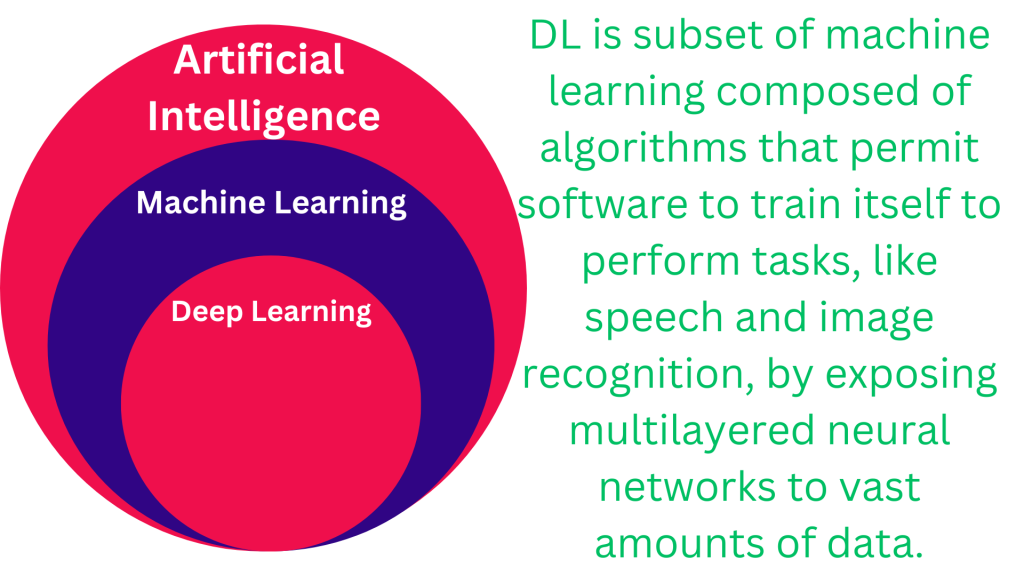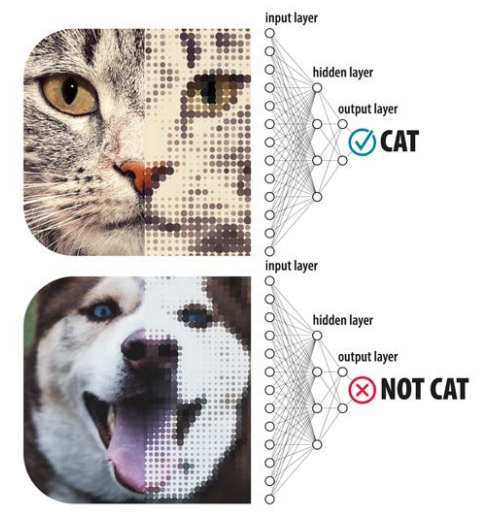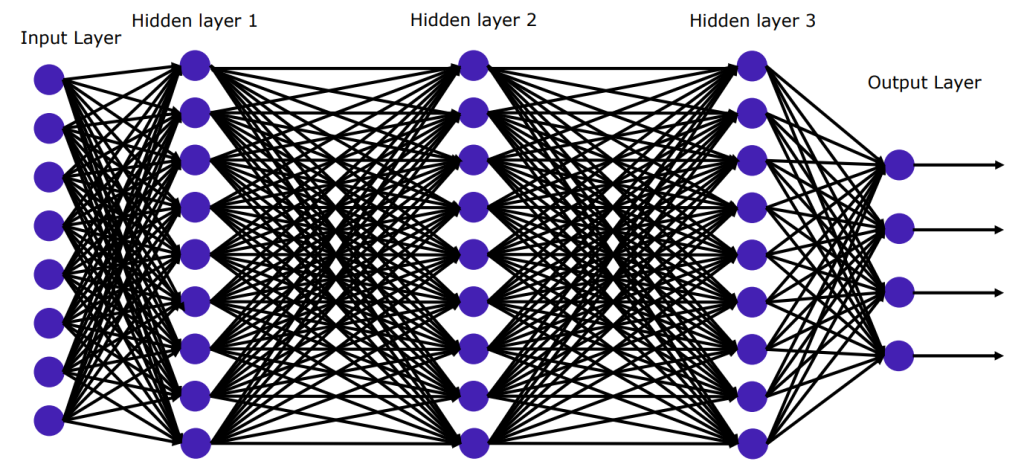Deep learning has become synonymous with artificial intelligence advancements, powering everything from self-driving cars to medical diagnosis and even generating art. But what exactly is it, and how does it work? This blog post will be your one-stop guide to understanding the intricacies of deep learning, exploring its various types, its relationship with artificial neural networks, and ultimately showcasing its real-world impact through a fascinating case study: deep learning at Meta (formerly Facebook).
What is Deep Learning?
Deep learning is a subfield of machine learning that involves the development and training of artificial neural networks to perform tasks without explicit programming. It is inspired by the structure and function of the human brain, using neural networks with multiple layers (deep neural networks) to model and solve complex problems.

The basic building block of deep learning is the artificial neural network, which is composed of layers of interconnected nodes (neurons). These layers include an input layer, one or more hidden layers, and an output layer. Each connection between nodes has an associated weight, and the network learns by adjusting these weights based on the input data and the desired output.
Deep learning algorithms use a process called back propagation to iteratively adjust the weights in order to minimize the difference between the predicted output and the actual output. This learning process allows the neural network to automatically discover and learn relevant features from the input data, making it well-suited for tasks such as image and speech recognition, natural language processing, and many other complex problems.
Deep learning has shown remarkable success in various domains, including computer vision, speech recognition, natural language processing, and reinforcement learning. Some popular deep learning architectures include convolutional neural networks (CNNs) for image-related tasks, recurrent neural networks (RNNs) for sequential data, and transformers for natural language processing tasks.
The term “deep” in deep learning refers to the use of multiple layers in neural networks, which allows them to learn hierarchical representations of data. The depth of these networks enables them to automatically extract hierarchical features from raw input data, making them capable of learning intricate patterns and representations.
Types of Deep Learning
Here are some of the most common types of deep learning:
Convolutional Neural Networks (CNN):
Definition: Specifically designed for processing grid-like data, such as images. CNNs use convolutional layers to automatically and adaptively learn spatial hierarchies of features, making them well-suited for image recognition and computer vision tasks.
- Primarily used for image recognition and computer vision tasks.
- Employs convolutional layers to learn hierarchical feature representations.
- Includes pooling layers for downsampling and reducing spatial dimensions.
Feedforward Neural Networks (FNN):
Definition: A type of neural network where information flows in one direction, from the input layer through one or more hidden layers to the output layer, without forming cycles. Commonly used for various supervised learning tasks.
- Also known as Multilayer Perceptrons (MLP).
- Consists of an input layer, one or more hidden layers, and an output layer.
- Information flows in one direction, from input to output.
Recurrent Neural Networks (RNN):
Definition: Neural networks designed for sequence data, where information is passed from one step to the next. RNNs use recurrent connections to capture dependencies and relationships in sequential data, making them suitable for tasks like natural language processing and time series analysis.
- Suited for sequence data, such as time series or natural language.
- Utilizes recurrent connections to process sequential information.
- Long Short-Term Memory (LSTM) and Gated Recurrent Unit (GRU) are popular RNN variants that address the vanishing gradient problem.
Generative Adversarial Networks (GAN):
Definition: A model framework where a generator network creates new data instances, and a discriminator network evaluates the authenticity of these instances. The two networks are trained adversarially, leading to the generation of realistic data, commonly used in image synthesis and generation.
- Comprises a generator and a discriminator trained adversarially.
- The generator creates new data instances, and the discriminator distinguishes between real and generated data.
- Widely used for image generation, style transfer, and data augmentation.
Deep Reinforcement Learning (DRL):
Definition: A combination of deep learning and reinforcement learning. In DRL, agents learn to make decisions by interacting with an environment and receiving feedback in the form of rewards. This approach is commonly used in tasks like gaming, robotics, and autonomous systems.
- Integrates deep learning with reinforcement learning.
- Agents learn to make decisions by interacting with an environment and receiving feedback in the form of rewards.
- Used in gaming, robotics, and autonomous systems.
Capsule Networks (CapsNets):
Definition: Proposed as an alternative to convolutional neural networks for handling hierarchical spatial relationships. Capsule networks use capsules to represent different properties of an object and their relationships, aiming to improve generalization and robustness in computer vision tasks.
- Proposed as an improvement over CNNs for handling spatial hierarchies.
- Capsules represent various properties of an object and their relationships.
- Aimed at improving generalization and handling viewpoint variations.
Autoencoders:
Definition: Unsupervised learning models that consist of an encoder and a decoder. The encoder compresses input data into a lower-dimensional representation, and the decoder reconstructs the input from this representation. Autoencoders are used for tasks such as data compression and denoising.
- Designed for unsupervised learning and dimensionality reduction.
- Consists of an encoder that compresses input data and a decoder that reconstructs the input from the compressed representation.
- Variational Autoencoders (VAEs) add a probabilistic component to generate diverse outputs.
Artificial Neural Networks and Deep Learning
Artificial Neural Networks (ANNs) derive inspiration from the electro-chemical neural networks observed in human and other animal brains. While the precise workings of the brain remain somewhat enigmatic, it is established that signals traverse a complex network of neurons, undergoing transformations in both the signal itself and the structure of the network. In ANNs, inputs are translated into signals that traverse a network of artificial neurons, culminating in outputs that can be construed as responses to the original inputs. The learning process involves adapting the network to ensure that these outputs are meaningful, exhibiting a level of intelligence in response to the inputs.
ANNs process data sent to the ‘input layer’ and generate a response at the ‘output layer.’ Intermediate to these layers are one or more ‘hidden layers,’ where signals undergo manipulation. The fundamental structure of an ANN is depicted in below Figure, offering an illustrative example of an ANN designed to predict whether an image depicts a cat. Initially, the image is dissected into individual pixels, which are then transmitted to neurons in the input layer. Subsequently, these signals are relayed to the first hidden layer, where each neuron receives and processes multiple signals to generate a singular output signal.

While above Figure showcases only one hidden layer, ANNs typically incorporate multiple sequential hidden layers. In such cases, the process iterates, with signals traversing each hidden layer until reaching the final output layer. The signal produced at the output layer serves as the ultimate output, representing a decision regarding whether the image portrays a cat or not.
Now we possess a basic Artificial Neural Network (ANN) inspired by a simplified model of the brain, capable of generating a specific output in response to a given input. The ANN lacks true awareness of its actions or an understanding of what a cat is. However, when presented with an image, it reliably indicates whether it ‘thinks’ the image contains a cat. The challenge lies in developing an ANN that consistently provides accurate answers. Firstly, it requires an appropriate structure. For uncomplicated tasks, ANNs may suffice with a dozen neurons in a single hidden layer. The addition of more neurons and layers empowers ANNs to confront more intricate problems.

Deep learning specifically denotes ANNs with at least two hidden layers, each housing numerous neurons. The inclusion of multiple layers enables ANNs to create more abstract conceptualizations by breaking down problems into smaller sub-problems and delivering more nuanced responses. While theoretically, three hidden layers might be adequate for solving any problem, practical ANNs often incorporate many more. Notably, Google’s image classifiers utilize up to 30 hidden layers. The initial layers identify lines as edges or corners, the middle layers discern shapes, and the final layers assemble these shapes to interpret the image.
If the ‘deep’ aspect of deep learning pertains to the complexity of the ANN, the ‘learning’ part involves training. Once the appropriate structure of the ANN is established, it must undergo training. While manual training is conceivable, it would necessitate meticulous adjustments by a human expert to align neurons with their understanding of identifying cats. Instead, a Machine Learning (ML) algorithm is employed to automate this process. Subsequent sections elucidate two pivotal ML techniques: the first utilizes calculus to incrementally enhance individual ANNs, while the second applies evolutionary principles to yield gradual improvements across extensive populations of ANNs.
Deep Learning Around Us
Deep Learning @ Meta
Meta’s digital landscape is a bustling metropolis powered by an invisible hand: Deep Learning. It’s the algorithm whisperer, shaping your experiences in ways you might not even realize. From the perfect meme in your Instagram feed to the news articles that pique your curiosity, DL is the AI undercurrent guiding your journey.
Let’s dive into the concrete jungle of Meta’s DL applications:
News Feed Personalization: Ever wonder why your Facebook feed feels like a tailor-made magazine? Deep Learning scans your likes, shares, and clicks, creating a unique profile that attracts articles and updates you’ll devour. It’s like having a digital best friend who knows your reading preferences better than you do!
Image and Video Recognition: Tagging that perfect vacation photo with all your friends? Deep Learning’s facial recognition powers are at work. It also identifies objects in videos, fueling features like automated captions and content moderation. Think of it as a super-powered vision system for the digital world.
Language Translation: Breaking down language barriers with the click of a button? Deep Learning’s got your back. It translates posts, comments, and messages in real-time, letting you connect with people across the globe without needing a Rosetta Stone. It’s like having a pocket Babel fish that understands every dialect.
Spam and Fake News Detection: Ever feel like wading through a swamp of online misinformation? Deep Learning acts as a digital gatekeeper, analyzing content for suspicious patterns and identifying spam and fake news before they reach your eyes. It’s the knight in shining armor of the internet, defending against the forces of digital darkness.
Predictive Analytics: Wondering why that perfect pair of shoes keeps popping up in your ads? Deep Learning is analyzing your online behavior, predicting what you might like before you even know it. It’s like having a psychic personal shopper who knows your wardrobe needs better than you do.
And the journey doesn’t end there! Deep Learning is also the mastermind behind Instagram’s Explore recommender system, curating a personalized feed of photos and videos that keeps you endlessly scrolling. It’s like having your own digital art gallery, hand-picked just for you.
Deep Learning @ Meta is more than just algorithms and code. It’s the invisible force shaping our online experiences, making them more personalized, informed, and connected. So next time you scroll through your feed, remember, there’s a whole world of AI magic working behind the scenes, whispering in your ear and making your digital journey truly unique.
Conclusion
Deep learning is not just a technological marvel; it’s a gateway to a future filled with possibilities. Deep learning has transcended traditional machine learning boundaries, paving the way for innovative applications across various industries. The case study of Meta showcases the real-world impact of deep learning in social media and technology. As we continue to explore the depths of this field, ethical considerations and responsible AI practices will play a crucial role in shaping a future where deep learning benefits society at large.
Remember, this is just the tip of the iceberg. The world of deep learning is vast and constantly evolving. As you delve deeper, you’ll encounter even more fascinating concepts and applications. So, keep exploring, keep learning, and keep pushing the boundaries of what’s possible with this transformative technology.
